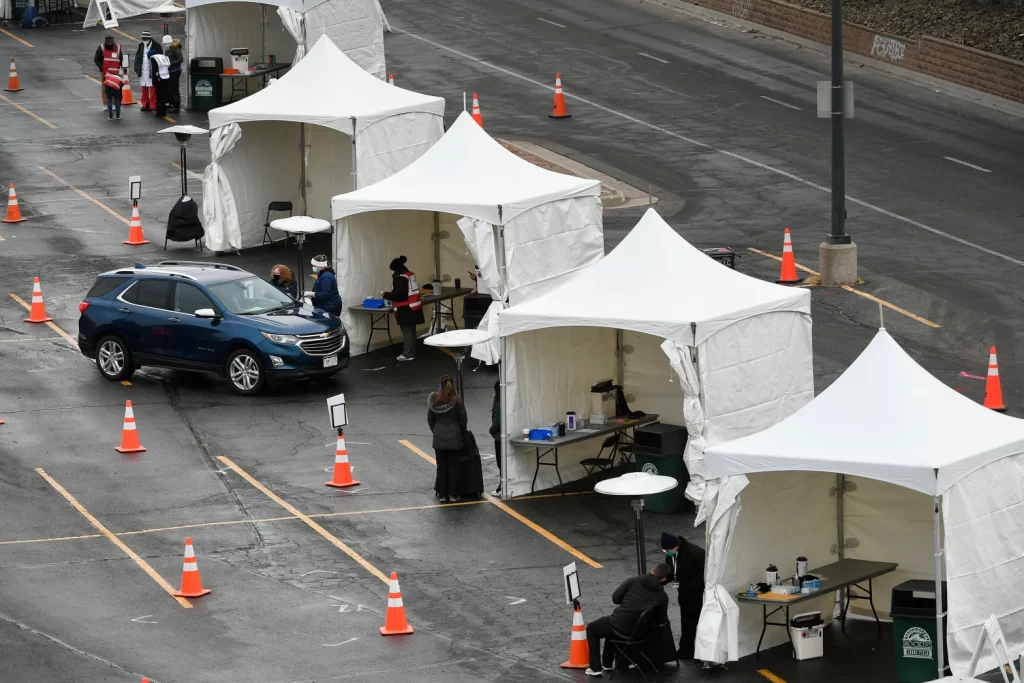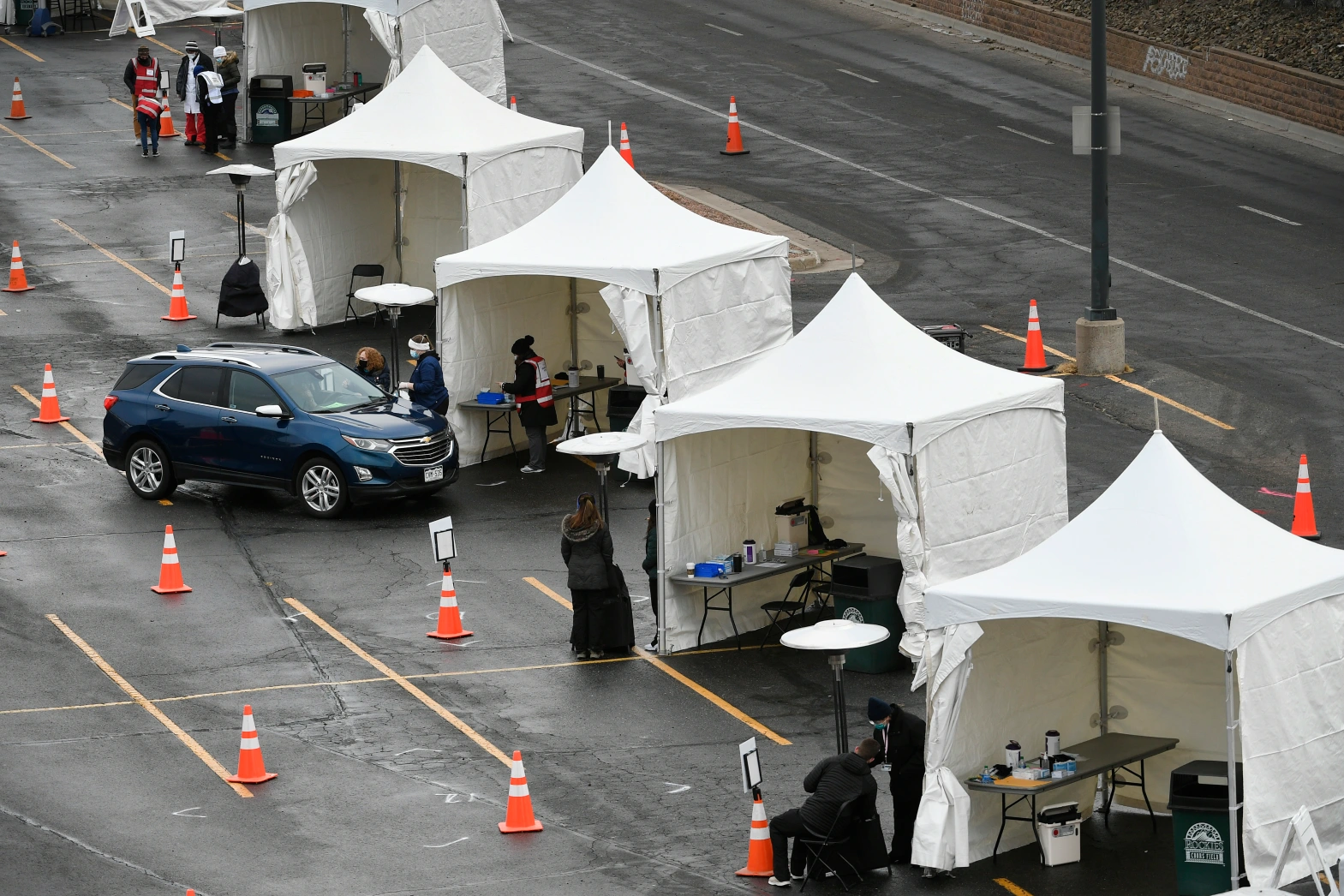The Biden administration plans to end the Covid public health emergency this spring, as the U.S. shifts away from responding to the pandemic as a national crisis and instead manages the virus more like a seasonal respiratory disease.
Starting in April 2023, Colorado will see the largest shift in how people get their health insurance since the Affordable Care Act took effect in 2014.
About 325,000 people in Colorado are expected to be disenrolled from Medicaid as federal rules requiring states to keep them on during the COVID-19 public health emergency come to an end, said Kim Bimestefer, executive director of the Colorado Department of Health Care Policy and Financing.
That’s comparable to the 400,000 people who joined Medicaid in the first two years of its expansion to slightly higher-income groups in 2014 and 2015, she said.
It’s just one of a series of changes coming this year as the federal government’s COVID-19 public health emergency — and the expansions of social programs that came with it — comes to an end.
Other changes will affect how people pay for COVID-19 vaccines and testing, how much hospitals receive for treating some patients with the virus and whether people who were prescribed controlled substances online need to find an in-person medical home.
On Monday, the Biden administration announced the public health emergency will end May 11. While the emergency declaration is often linked in people’s minds to restrictions meant to slow the virus’ spread, almost all of the federal and state rules meant to control transmission are already gone.
Representatives for physicians, hospitals and groups focused on patient costs all listed the end of extended Medicaid coverage as the most disruptive change as the federal government winds down its pandemic response. In most cases, members will lose eligibility because their income increased above Medicaid’s limit. Others moved out of state, or exhausted their one year of postpartum coverage.
Late last year, Congress decoupled the requirement that states keep residents on Medicaid from the public health emergency, meaning they could start removing those deemed ineligible as of April 1 even if Biden hadn’t moved to end the emergency.
The Kaiser Family Foundation estimated about 14 million people could be disenrolled nationwide, though some of them likely will return to Medicaid by the end of the year. Some of the people who lose coverage likely will be eligible, but won’t know they need to submit paperwork to maintain their coverage.
Bimestefer said anyone who is receiving Medicaid needs to make sure their contact information is up to date, so they get the paperwork to prove their eligibility. The plan is for members to receive a notice more than two months before their enrollment anniversary, which is when the department will determine if they still qualify, she said.

“We really want people to know this is coming,” she said. “We want to keep them covered on another (type of insurance) policy.”
The income limit for Medicaid coverage is $19,392 for an individual and $39,900 for a family of four. Some families that don’t qualify for Medicaid may be able to insure their children under the state’s Child Health Plan Plus program, which allows up to $79,500 in income for a family of four.
In the four years before the pandemic, an average of 65% of people who were removed from Medicaid were uninsured for at least a short time, according to a study from the Kaiser Family Foundation. About 41% of all people who were disenrolled later returned to Medicaid within a year.
The Department of Health Care Policy and Financing has an education campaign to let people who lose Medicaid know they likely will be eligible for tax credits to purchase insurance on the marketplace, and that they need to plan for higher out-of-pocket costs with commercial insurance, Bimestefer said. It also got permission from the Centers for Medicare and Medicaid Services to take other steps, like accepting forwarding addresses from the U.S. Postal Service as proof that someone still lives in the state.
The state is also using an automated process of looking up members’ income information in databases for other social programs and one run by credit score company Equifax. Colorado is one of 11 states that completed more than half of reviews for people whose eligibility was based solely on income using an automated process, according to the Kaiser Family Foundation.
The Medicaid redetermination period starts shortly after enhanced food assistance rates end in March, which could put a strain on counties’ social services departments, Bimestefer said. People can somewhat ease the strain on counties by doing as much online as possible and only calling for help if they get stuck, she said.
Dr. Mark Johnson, past president of the Colorado Medical Society, said he’s concerned that people will still fall through the cracks and lose their insurance, despite the state’s efforts. When people become uninsured, they tend to avoid primary care that could prevent serious health problems, he said.
“People are going to wait longer with emergencies,” he said.
Other changes coming as the public health emergency wind down include:
Paying for testing, treatment and vaccines
The government’s stockpile of free COVID-19 tests and treatments is running low, and Congress hasn’t appropriated money to buy more. While health insurance will cover some of the cost — for those who have it — some people may be less likely to get tested if they face out-of-pocket costs, said Adam Fox, deputy director of the Colorado Consumer Health Initiative.
Vaccines also will no longer be free to everyone. People with insurance will most likely be at least partially covered for future doses, though they could be charged a copay or other out-of-pocket costs. Medicaid and CHIP are required to offer the COVID-19 vaccines for free, and will have testing covered into 2024.
The U.S. Preventive Services Task Force could decide to require all insurers to cover COVID-19 vaccines without out-of-pocket costs, as they do with flu shots, Fox said. Until then, some people will be stuck paying out of pocket, which is more concerning now that the government isn’t negotiating the vaccines’ prices, he said.
Pfizer has said it will charge somewhere between $110 and $130 for its shot, while Moderna has proposed a similar price.
“If we have potentially thousands of people losing coverage and pharmaceutical companies raising the cost of vaccines people want and need… we may see a significant increase in the number of COVID infections and deaths,” he said.
Hospitals will be paid less
Hospitals will no longer get an enhanced rate for treating COVID-19 patients. During the public health emergency, Medicare paid 20% more when a patient had the virus than it normally would for the same hospital services.
Megan Axelrod, director of regulatory policy and federal affairs at the Colorado Hospital Association, said the change comes at a difficult time, when hospitals have been dealing with increased costs for staffing and supplies.
“It has been a remarkably challenging time,” she said.
The Centers for Medicare and Medicaid Services had about 50 pages worth of “blanket waivers,” exempting hospitals from paperwork requirements and granting them more flexibility in how they provide care, Axelrod said. It remains to be seen if any of those will remain in place once the public health emergency ends, she said.
One important waiver allowed critical access hospitals — small, rural facilities that are the only option in their area — to keep patients longer than 96 hours, Axelrod said. Normally, those hospitals need to either transfer patients to a larger hospital or discharge them to their homes or a nursing facility within four days. That’s been harder to do with few beds open in nursing homes, so reinstating that rule now would create challenges, she said.
Some telehealth flexibilities remain
The omnibus spending bill that Congress passed at the end of 2022 extended some telehealth flexibilities through the end of 2024. That means Medicare will continue to pay for telehealth visits for both urban and rural residents, and “hospital at home” programs that rely on remote monitoring will remain an option.
It’s not clear, however, if patients will still be able to get controlled substances prescribed entirely through telehealth.
Before the pandemic, they had to schedule an in-person visit, which was meant to cut down on prescribing addictive substances without a legitimate medical purpose. That flexibility is supposed to end in May, though it’s possible the Drug Enforcement Agency could come up with a plan to allow at least some telehealth prescribing, such as for buprenorphine, a weaker opioid used to treat addiction.
Providing telemedicine across state lines will also become more complicated, Johnson said. Before the pandemic, doctors who wanted to provide telehealth services had to get a license in every state where their patients lived, and those rules will return after the emergency ends. It’s likely states will eventually work out some sort of deal to eliminate that hurdle, though, because online visits are popular, he said.
“Physicians love it. Patients love it,” he said.
Source: Denverpost



